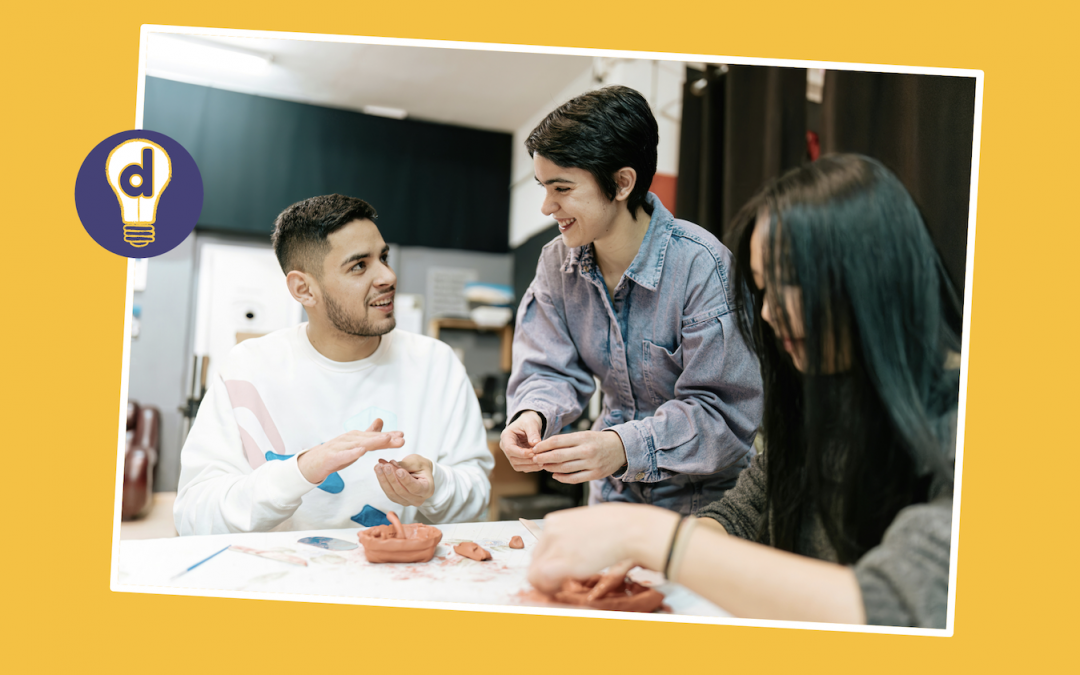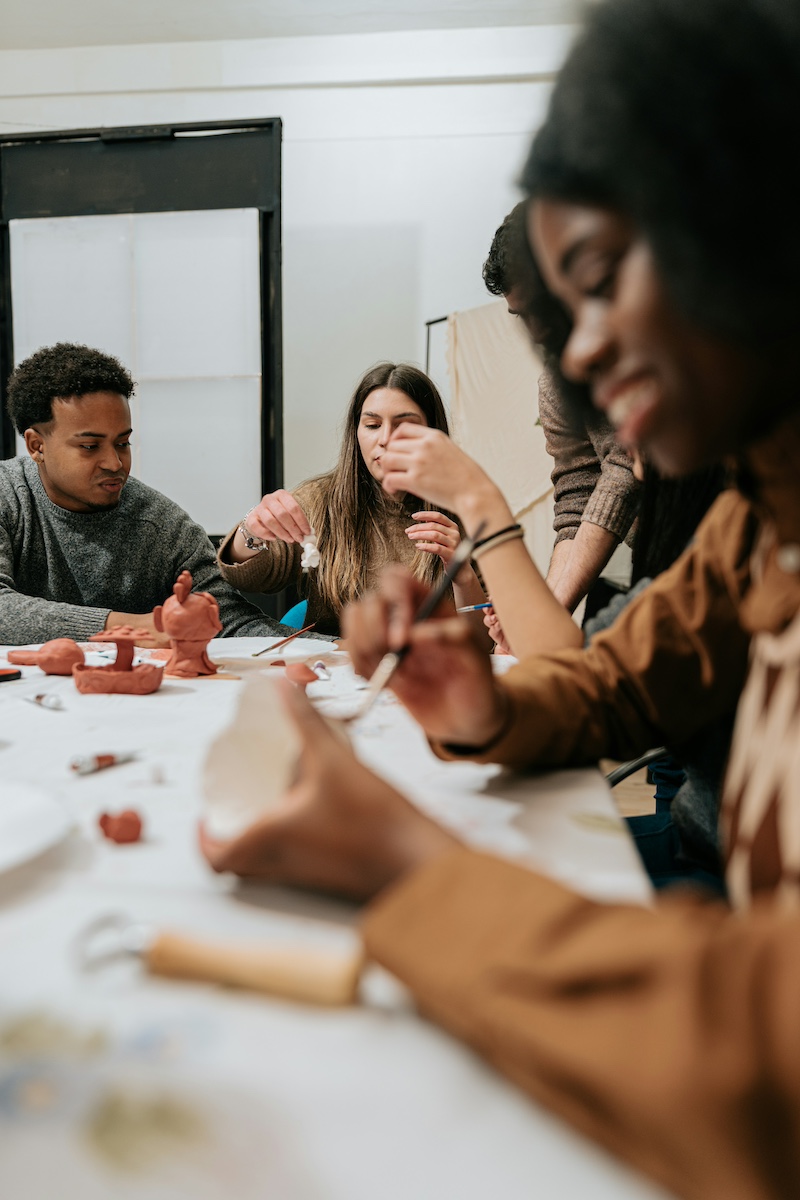Increasing belonging is now a priority in both education and business.
‘Belonging’, says Tony Bond (2022), ‘is one of the biggest buzzwords in business today.’ And he goes on, ‘It’s about time.’ He cites the role of movements like #metoo and #BlackLivesMatter in keeping issues of diversity, social justice and inclusion in the headlines.
Bond also highlights the urgency of increasing belonging after the Covid pandemic and the so-called ‘Great Resignation’: now business success is also closely linked to creating a culture of belonging within companies.
Meanwhile, in the corporate world of higher education, increasing belonging has become central to thinking about almost anything that isn’t going quite right. For Helen Webster (2022), rolling out a new initiative on belonging for AdvanceHE, ‘Belonging is a holistic way to frame and address issues such as student wellbeing, engagement, and success.’
Definitions of ‘belonging’
Definitions of the word vary greatly. ‘The concept of belonging is notoriously hard to define,’ say the researchers behind a year-long WONKHE/Pearson project. ‘While theories of belonging … are complex, the descriptive terms often used when discussing “belonging” will resonate with anyone: “connectedness”, “feeling valued”, “feeling accepted”.’ They say, ‘Mental health is the key to belonging (or vice versa).’
In the world of work, Bond (2022) suggests, ‘Belonging is an employee’s sense that their uniqueness is accepted and even treasured by their organization and colleagues’ (Bond, 2022). ‘This means valuing the various components of an employee’s identity, such as being a parent, being of a particular race or being of a particular sexual orientation. In this sense, belonging is a close cousin to diversity and inclusion.’
Developing a sense of belonging
‘There is no quick fix to improve student belonging,’ says Webster. ‘Just telling students that they belong is unlikely to be effective.’ This will be true for the corporate world too, but the latter seems more sanguine about how to go about creating belonging.
This starts with the hiring process, and ensuring all application forms and branding speak to those who value inclusion (and discourage those who don’t). In HE, however, increasing belonging may mean different things in different departments within one institution – let alone between different institutions.
There is also, says Webster, ‘no one-size-fits-all approach.’ For her, the starting point is getting to know students, ‘creating ways for them to make their voices and their stories heard, as well as exploring what belonging means in the context of a particular programme and institution.’
Belonging and course design
Where might learning designers come in?
Clearly they need to establish the role that belonging has for their clients at the outset. This meaning may be quite far from the meaning attached to it by course participants, and establishing their position would be useful early on too. And the good news from the still-highly-respected work of Baumeister and Leary (1995) is that: ‘the need to belong is a powerful, fundamental, and extremely pervasive motivation … people form social attachments readily under most conditions.’
Here are some recommendations for increasing belonging in course design:
Use empathy
- Consciously view issues from other people’s perspectives: ‘Empathy is’, says the actor Max Carver, ‘the starting point for creating a community and taking action. It’s the impetus for creating change.’
Check your positionality
- Check your understanding of your positionality to ensure you are not appealing to your own biases or planning programmes that marginalise course participants who were taught in very different ways to you. Harrington (2022) suggests examining the groups we belong to; our roles; our training and experience; our beliefs and values; our privilege or marginalisation. ‘[it is] ‘a powerful strategy for building student success’, she says. (For Harrington’s full questionnaire on positionality, see below.)
Provide diverse references and examples
- Ensure all reading, all references, all topics acknowledge and, indeed, celebrate difference among the many cultures and characters to be found on your courses: the neurodiverse, those with disabilities, international participants, minoritised ethnicities (previously BAME), LGBTQAI+ and on – the whole rich diversity of life.
Design for informal interaction
- In HE, offer more opportunities to engage with other students in ways not immediately bound up with assessment, where stress may damage relationships: more c.10-min. breakout groups online or in the classroom, perhaps; more paired work away from the classroom; and fun. In answer to the Pearson/WONKHE 2021/2 survey question, what would give you a greater sense of belonging, the most popular choice (46%) was developing closer/more friendships, and the second (42%) getting to know people on my course better (Capper and McVitty, 2022).
Create opportunities for students to discuss belonging
- Find space in courses for participants to explore their ideas about belonging, what it means to them and how they can support belonging in others.
Exercises to increase belonging
This is where Susie Wise’s book Design for Belonging (2022) will come in, along with her toolkit.
The book, which comes out of the Stanford d.school programme, is designed to build inclusion and collaboration in any form of community. In the book, there are plenty of exercises on increasing belonging that you might like to plunder.
‘These ideas are,’ says Texas Christian University chief inclusion officer Jonathan Benjamin-Alvarado, ‘low-hanging fruit, some real grist to make an impact on campus’ (Bernier, 2024). You could do worse than explore this book for your own enrichment and understanding first.
Wise starts by examining Belonging and Othering, getting her readers to feel what they’re both like and helping readers to recognise belonging and othering when they see them. There’s an early exercise around metaphors you might like to start with:
Belonging is like _____ because
Belonging looks like _____ because
Belonging feels like _____ because
Othering is like _____ because
Othering looks like _____ because
Othering feels like _____ because (p.27)
Here’s another neat little exercise that shows her approach (she calls it a ‘Notice’):
- Where do you contribute, and how does it shape your belonging?
- What opportunities do people in your group have to share their gifts and make meaningful contributions?
- Do you need to create new opportunities for people to share their gifts and know that their contributions matter?
- How does any given moment of contribution have ripple effects? (p.58)
Simple activities – ‘low-hanging fruit’ – that can get participants to think and, indeed, grow.
Learning specialist Nora Wynne has been incorporating ideas from Design for Belonging into her work at conferences and workshops as well as in classes. She says, ‘No one’s saying this is a brand new or revolutionary idea. They’re saying, “Oh my God, of course”’ (Bernier, 2024).
Bibliography
Baumeister, R. F. & Leary, M. R. (1995) The need to belong: Desire for interpersonal attachments as a fundamental human motivation. Psychological Bulletin, 117(3), 497-529.
Bernier, N. (2024) Can belonging be designed? Learning Well.
Blake, S., Capper, G. and Jackson, A. (2022) Building Belonging in Higher Education: recommendations for developing an integrated institutional approach. Pearson/WONKHE
Capper, G. and McVitty, D. (2022) Belonging, inclusion and mental health are all connected. WONKHE
Bond, T. (2022) Belonging in the Workplace: what does it mean and why does it matter? Great Place to Work.
Harrington, C. (2022) Reflect on your positionality to ensure student success. Inside Higher Ed.
hooks, b. (1994) Teaching to Transgress: education as the practice of freedom London: Routledge
Parasram, A. and Khasnabish, A. (2022) Frequently Asked White Questions. Fernwod Publishing, Halifax NS.
Webster, H. (2022) Building student ’belonging’. AdvanceHE.
Wise, S. (2022) Design for Belonging: how to build inclusion and collaboration in your communities New York: Ten Speed Press
You might also like:
Thank you to:
- Ray Martin for researching and preparing this article
Want to learn how to build great courses?
We run a PGCert, PGDip and MA in Creative Teaching and Learning Design.
Find out which stage is right for you.





Trackbacks/Pingbacks